Seeing the Great Wall of China personally is a once-in-a-lifetime opportunity for travelers yearning to experience one of the most distinctive landmarks globally. It is simply a short drive from Beijing. Whether you’re a keen historian wishing to check out the relics of the astoundingly ancient civilization or a nature lover captivated by the views, this guide will help you with recommendations to utilize your time efficiently. Prepare yourself to discover which sections have the best sights, valuable tips for getting around, and captivating tales to accompany your exploration of this remarkable structure.
What are the Best Sections of the Great Wall to Visit?
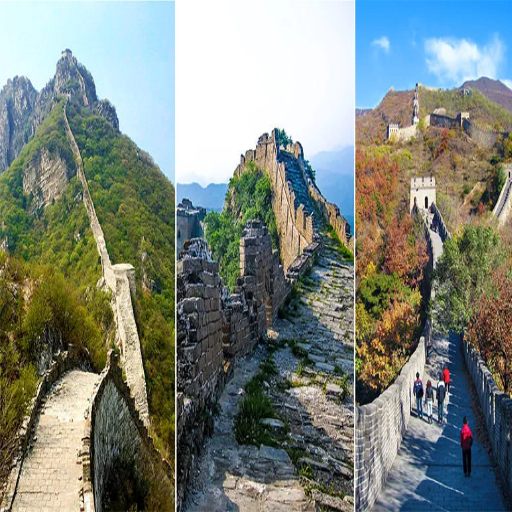
What Makes the Mutianyu Great Wall Unique?
The Mutianyu Section of the Great Wall is a favorite stop for travelers because it is easy to visit and is one of the most well-preserved parts. Some tourist sites even refer to this wall section as a wonder of architecture. It covers 2.5 kilometers and has a total of 23 watchtowers. These features make it a perfect blend of stunning scenery and historical architecture. The area is popular for its dense vegetation, with the wall winding through gorgeous forests that transform dramatically according to the seasons. During the summer, trees are deep green; in autumn, they turn golden, and finally get covered in snow during winter.
Compared to the busier Badaling section, Mutianyu offers a more tranquil experience, perfect for those who want to avoid large crowds but still appreciate the magnificence of the wall. The modern amenities, such as the smooth cable car system and a Toboggan slide used for descending, also set this portion apart. Unlike other tourist sites, Mutianyu serves visitors of all ages, making it more family-friendly. The wall is also not as difficult to reach, being just under 73 kilometers from Beijing, making it ideal for people hoping to travel for a day. Besides having a rich history and paradigmatic views, Mutianyu has astounding facilities, making it a top-visited site of the Great Wall.
Why Is Badaling Popular Among Tourists?
Badaling has been one of the most well-known preserved sections of the Great Wall for its historical significance and easy accessibility. It was the first part of the Great Wall to be opened to tourists after careful restoration. Badaling’s location, about 70 kilometers, or 43 miles, from Beijing, makes it super convenient for visitors traveling to the capital. More than that, Badaling is highly accessible for tourists, as there are good walking paths, clear signs, and facilities such as restaurants, shops, and museums.
Perhaps the most crucial factor is the infrastructure built around the site. Badaling’s infrastructure includes an advanced cable car system and paved walkways, allowing people of different physical capabilities to enjoy the wall. The views of the wall are breathtaking, especially in the fall, when the mountains nearby are covered in a blanket of bright colors. In addition, as a part of China’s heritage frequently visited by global leaders, Badaling remains attractive to travelers and is a must-visit landmark because of its deep cultural and historical significance.
Where on the Great Wall Can You Get the Most Scenic Views?
Badaling is known for its ease of access and its historical significance, but each section of the Great Wall has something different to offer gravel hikers. Mutianyu, for example, is famous for its gorgeous restoration along with other parts of the Great Wall, which also has a stunning view in spring and summer when the surrounding forests bloom. It provides a more relaxing experience than other parts as it offers a serene magnificence, devoid of throngs of tourists.
For more daring travelers, Jiankou is amazing alongside the wall, offering an off-the-beaten-path wilderness. This section of the wall features awe-inspiring scenery along with rugged terrain filled with steep mountains and jagged ridges. It is ideal for striking photographs and anyone looking for a good challenge.
At the same time, Simatai presents a unique combination of great history and views, with great night tours showcasing the Great Wall in stark light alongside the night sky, making it one of the most photographed parts. Every section of this architectural masterpiece tells a different story.
How to Plan a Great Wall Day Tour from Beijing?
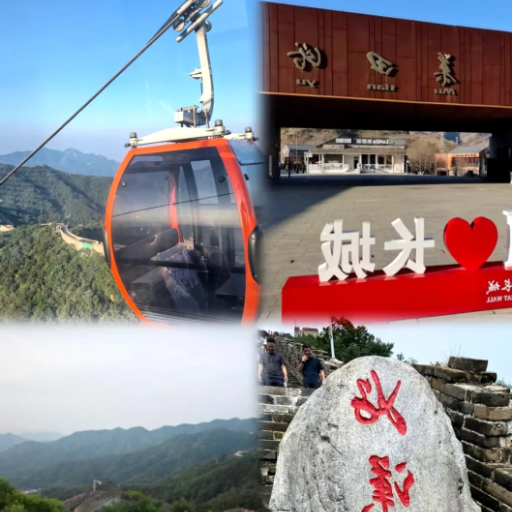
What is Included in a Full-Day Tour of the Great Wall?
A full-day tour of the Great Wall is generally conducted in a systematic flow that allows participants to have a fulfilling experience of the world wonder. Most tours begin with easy hotel pickup, which makes it easier for travelers from Beijing. Transport provided also includes air-conditioned buses, which is a good perk when traveling to places like Mutianyu, Badaling, or Simatai.
Moreover, tickets for admission to the Great Wall are most likely provided so that people do not need to deal with queues. Most tourists choose guided options as they are accompanied by expert guides who narrate captivating stories about the wall’s history and why it was built. Its importance makes the trip even more worthwhile. Apart from these, many tours also include the opportunity to explore other sites or landmarks, like going on a cable car ride, for instance, capsule cars are optional but strongly advised as they provide breathtaking views.
Lunch is often included in the package, providing an opportunity to try proper Chinese food at a local eatery. Some other tours go the extra mile by offering refreshments or light snacks, keeping you energized all day. Most visitors will find that their tour has set aside some time for photography and gentle strolls to soak in the astounding architecture and beautiful views.
Before heading back to Beijing, some tours offer a quick stop at local craft or souvenir stores, allowing visitors to capture pieces of their travels. Whether you’re a history enthusiast, nature admirer, or adventure lover, a fully guided day tour of the Great Wall will certainly exceed your expectations with comfort, culture, and an unforgettable experience.
Is there a possibility of booking a Private Tour?
Sure enough, a private tour of the Great Wall of China can be arranged for families and individuals and is fully customized. The flexibility extends to the time and site of pick up and which portions of the wall are to be visited, including the famous Badaling, the scenic Mutianyu, and the more wild Jinshanling. Such travelers receive focused attention from an excellent guide, who can provide detailed historical information and answer questions during the trip.
Private tours usually include additional amenities, like more comfortable cars, exclusive transportation to less-visited parts of the Wall, exclusive, lesser-used hiking or photography breaks, and other optional activities. Numerous local providers also feature optional local meals within customizable tours that include other cultural attractions of the region. Whether seeking a leisurely excursion full of exploration or depth, Friends Private Tours guarantees a satisfying and unforgettable experience for each tourist.
How Do I Choose The Right Great Wall Tour?
When choosing a Great Wall tour, many vital factors should be considered so that the experience fits with your expectations. First, decide which section of the Great Wall you plan to visit. Well-known sections such as Badaling and Mutianyu are accessible and well-maintained, making them perfect for families and casual sightseers. However, Jinshanling and Jiankou offer steep hiking routes and superb scenery better suited to seasoned hikers and adventure travelers.
In addition, make sure to select the tour type that best matches your needs. Exploration tours are budget-friendly, while private tours are more flexible in structure and personal itineraries. Take the estimated time of the tour into account as well. Many tours only last for a few hours, while some offer themselves as full-day or even multi-day activities.
It is also wise to ask what is included in the tour package. Some tours may offer full meals or provide a professional guide, while others might include unique amenities like cable car rides or guided hikes. Consider reading other travelers’ reviews, as they reflect the quality and trustworthiness of the tour provider. Considering these considerations, you can choose a Great Wall tour that guarantees a unique, rich experience tailored to your needs.
What are the Travel Times for a Day Trip to the Great Wall?
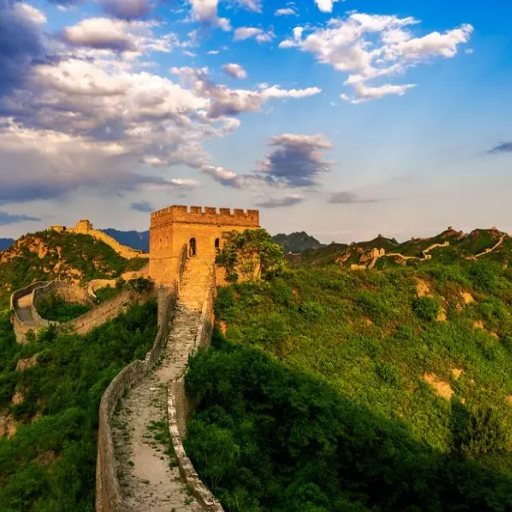
How Long Does It Take to travel from Beijing to the Great Wall?
The travel time to the Great Wall from Beijing will depend on which section you decide to visit and how you intend to travel. The most famous sections, like Badaling, Mutianyu, and Jinshanling, are far from the Beijing city center. To illustrate, Badaling, the closest to most visitors, usually takes around 1.5 to 2 hours by car or private transfer; the rest depends on traffic. If you opt for public transport, which includes the subway and bus, it will take around 2-3 hours.
The Mutianyu section, popular for its scenic beauty and relatively fewer crowds, is also accessible by car in around 1.5 to 2 hours. If opting for public transport, it can take around 3 hours. The Jinshanling section, which is less crowded and located further away from the city, will take around 2.5 to 3 hours by car.
Taking a trip requires some preparation to avoid long waits during peak traffic. Leaving early is often recommended to maximize the time spent in a specific area. In most situations, driving distance and available transit methods can significantly increase the ease and enjoyment of a day trip.
What Is the Ideal Visiting Time for the Great Wall?
The Great Wall of China can be visited at any time of the year; however, certain months provide a better experience than others. Spring (March to May) and Autumn (September to November) are two seasons that are widely favored due to their pleasant temperatures and remarkable views. Spring enhances the beauty of the surrounding area as the hills are covered with flowers in full bloom. Autumn’s gorgeous golden and crimson foliage adds to the views even more.
June through August is popular, especially for families on school break. Prepare for hotter temperatures and crowds, especially in more tourist-friendly sections like Badaling. On the other hand, winter (December to February) is a lot quieter and more peaceful. Visitors are sparse, allowing you to see the wall covered in snow. Although the cold can be hard to bear, it does give you a unique view of this ancient wonder. Checking the weather beforehand and going during the early morning or on weekdays can enhance your experience.
What Attractions are Near the Great Wall?
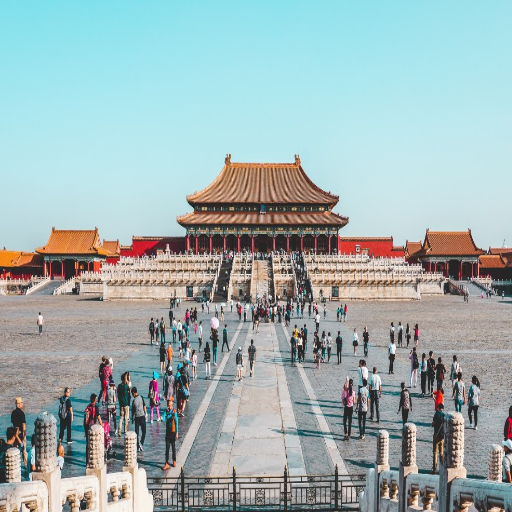
What Are Some of The Things I Can See While Touring Beijing?
Beijing offers a combination of breathtaking natural landscapes, modern construction, and historical culture. The soothing Temple of Heaven is another must-visit place. This masterpiece structure, encircled by vast private gardens, used to be the venue for important rituals. Another breathtaking location is the Summer Palace, a beautiful retreat filled with tranquil lakes, pavilions, and lush gardens.
No trip to Beijing is complete without visiting the Forbidden City, a vast imperial palace during the Ming and Qing eras. It is one of the city’s treasured highlights. The marvelous construction is further decorated by Tiananmen Square, a historical site holding iconic monuments like the Great Hall of the People and the National Museum of China.
Modern-day China has its unique places of interest as well. CCTV Headquarters, together with the 798 Art District, mark the steps of Beijing’s imposing inventions and imaginations. The other half of Beijing welcomes food lovers with its well-known roasted Peking ducks and Wangfujing street food markets. Furthermore, places such as Nanluoguxiang and the hutongs showcase the everyday life in Beijing back then, and even now, uniting traditional Beijing culture with modernization.
Therefore, if you’re captivated by the city’s architectural designs or are deeply interested in its history, then Beijing is one of the places you should have on your travel list. Tourists are given the unique opportunity to participate in activities as diverse as the city itself.
How to Incorporate the Forbidden City and the Summer Palace in My Itinerary?
Incorporating the Forbidden City and the Summer Palace into your itinerary is both possible and a highly fulfilling undertaking. To make the most of your trip, you should consider waking up a little earlier than usual. The gates of Forbidden City, otherwise called the Palace Museum, open at 8:30 AM. This site is among the most sought-after UNESCO World Heritage sites in Beijing. Once you get there, walking through the Courtyards, Imperial halls, and viewing the very detailed and constructed architectural marvels becomes a reality. Ensure you get there before peak visiting times so you can enjoy the site at a much calmer pace.
Once you finish exploring the Forbidden City, which takes roughly three to four hours, you can grab a quick lunch at a nearby restaurant. Choose a place that serves Beijing specialties like Peking Duck and noodles to refuel for the rest of the day. After lunch, go to the Summer Palace, around 15 kilometers northwest of the city center. You can catch a taxi, use a ride-hailing service, or take the metro, depending on how much you are willing to spend and how convenient you want your option to be.
The Summer Palace is one of the best places to visit in the afternoon. It is admired for its combination of traditional Chinese landscape architecture. It is suggested that you spend at least two or three hours walking through the breathtaking gardens, iconic Long Corridor, and stunning Kunming Lake, which looks spectacular while the sun sets. For boating enthusiasts, it is recommended that you rent a paddleboat on the lake as an extra treat.
Your day will blend nature and history by exploring the natural beauty of the Summer Palace while marveling at the architectural mastery within the Forbidden City during your day in Beijing.
What Are the Other Places of Interest in Beijing?
Explore Beijing’s vast and diverse landscape with rich historical sites, the modern culture of the city, and limitless possibilities.Resting within Beijing, the magnificently carved Ming Dynasty Temple of Heaven serves every tourist’s need. This place of worship was strategically perched on parks where Emperors held ceremonial activities, praying for the harvest season, and it still serves as a calm retreat where locals practice Tai Chi.
Step into contemporary life at the 798 Art District, where visitors can immerse themselves in modern art and culture. Formerly an industrial complex, this area has been transformed into a hub of galleries, studios, and trendy cafes, reflecting Beijing’s innovative spirit in the modern art world. Another must-see is Nanluoguxiang, a historic hutong district known for its uniquely patterned alleys lined with boutique stores. This gives visitors a chance to relish Beijing’s local life.
The famous Great Wall of China is another breathtaking sight, especially the Mutianyu stairway, which is maybe the best human-built structure. Wherever in Beijing you go, its remarkable history, exhilarating culture, and jaw-dropping scenery are guaranteed.
What Should I Know Before Visiting the Great Wall?
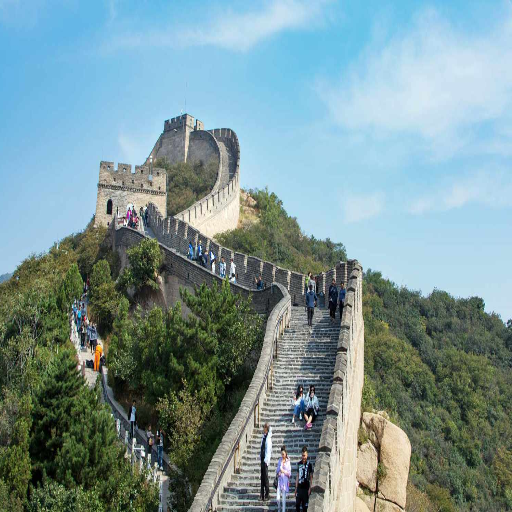
How do I Pack For a Day Trip?
To maximize comfort and enjoyment when visiting the Great Wall, make sure you start off by having comfortable walking or hiking shoes, as the wall’s steps and pathways can be very uneven. Also, remember to carry a backpack that contains a reusable water bottle alongside some snacks for bite-sized energy boosts.
Be mindful of the weather, rain weakness, and harsh sun by carrying a light jacket or poncho. Additionally, sunglasses, hats, and sunscreen always go a long way and can help ward off Lady Sunshine from sunburns. Having a small first aid kit is also useful, related to the ache towards PVC pain relief creams and light band aids, and will go a long way in ensuring comfort long term.
Bring a camera with you alongside a fully charged smartphone to maximize the stunning scenery, and don’t forget to pack a charger in case your adventure drains the battery. If the network isn’t unreliable, download offline navigation tools or take a map. Those above ensure a smooth and fun exploration of this historic landmark.
Are There Facilities Available at the Great Wall?
The Great Wall does offer amenities to help visitors, although some may differ based on certain regions of the Wall. At the famous and well-kept areas like Badaling and Mutianyu, there are visitor centers, washrooms, restroom shops, small eateries, and even food stalls. These locations fulfill the most basic needs of tourists, taking into account their comfort and requirements during the entire stay. You will also find parking lots and shuttle services that help you reach these important locations.
At less frequently visited and more remote parts of the Great Wall, most of the amenities are nonexistent, so it is essential to plan. If you’re going to these areas, be prepared to carry enough water, snacks, and other items, since these places are less commercialized, though much richer in history. Whether you spend time at a busy hub or a far-away part of the Wall, understanding the availability will help you get the most out of the experience.
What are the Recommended Safety Measures While Traveling?
Safety is always my priority when I’m on a trip, and I have a chance to visit the Great Wall. To begin with, I’m sure to have the right type of shoes, like comfortable hiking or walking shoes, because the wall can get steep and rough. Proper grip is vital since the stones can be slippery during or after rain. Equally, I like to check the weather conditions for the day before to prepare for anything, such as intense sunlight or even sudden rain.
Wearing a small belt with a first-aid kit is something I accommodate, as there is a slight chance that minor cuts or scrapes may arise during the exploration. On the other hand, carrying and drinking sufficient amounts of water is another key step that must be paid attention to; this is even more important during hot seasons, as the terrain may be more challenging. Moreover, these parts can be important for protection, and staying outdoors should be avoided in more constructed places, due to serious risks. Following the construction roads/chosen pathways will ensure my safety and help maintain the historic area.
Finally, I will not forget to report to someone about my travel plans, particularly for the less busy sections of the wall. Whether I am traveling alone or with a group, I tell a friend or relative about my planned route and estimated return time. These measures allow me to fully enjoy the grandeur of the Great Wall while still thinking of potential safety issues.
Frequently Asked Questions (FAQs)
Q: What is the best section of the Great Wall of China to visit near Beijing?
A: Badaling and Mutianyu are the most well-known sections of the Great Wall of China close to Beijing. Badaling is the best preserved and most popular section. Meanwhile, Mutianyu, although less crowded, offers stunning views of the wall, which makes it great for sightseeing.
Q: Can I take a cable car during my Great Wall of China tour?
A: Certainly. Most trips to the Great Wall, particularly in the Badaling and Mutianyu areas, have cable car services to facilitate climbing the wall. This allows visitors to experience the breathtaking views of the Great Wall without too much climbing.
Q: What kind of transportation is included in a full-day tour, including The Great Wall?
A: During a full-day tour that includes the Great Wall, guests are often offered a round-trip transfer from their hotel in Beijing. This can be done using a private car or a shared bus—both options make the journey to the designated section of the Wall quite convenient.
Q: Is free cancellation available for Great Wall tours?
A: Most travel companies will allow you to cancel your tour of the Great Wall of China with no fee up to a specific time before the tour starts, so you most likely will not be charged a cancellation fee. Always check the terms and details of the contract during your purchase.
Q: Can I visit the Ming Tombs from Beijing to the Great Wall?
A: Yes, on many tours you can go to the Ming Tombs and also visit a section of the Great Wall, and in most cases, you will receive additional information about the places you are visiting during your one-day trip from Beijing.
Q: Are tour guides available to explore the Great Wall in Beijing?
A: Absolutely. Most tours offered for the Great Wall of China include a professional guide who provides useful information and facts about the wall, including details about its construction in the Ming dynasty and the various watchtowers that tell vivid tales.
Q: What activities can I do at the Mutianyu Great Wall scenic area?
A: At the Mutianyu Great Wall scenic area, tourists can hike along the wall, explore the various watchtowers, ride the cable car or toboggan down, and witness stunning views of the area.
Q: What are the Great Wall ruins, and can I visit them?
A: The Great Wall ruins refer to segments of the wall that have become dilapidated or are not well-maintained, unlike others. While some tours focus on the restored portions, more adventurous travelers may explore these ruins, usually in more secluded places.
Q: How do I choose the best Great Wall section for my visit?
A: When considering the Great Wall section, consider accessibility, crowds, and the experience you wish to have there. Badaling is excellent for first-timers, while Mutianyu offers beauty and fewer crowds, which is great for people who want to enjoy viewing the Great Wall more peacefully.